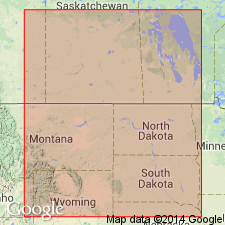
- Usage in publication:
-
- Hecla beds
- Modifications:
-
- Named
- Dominant lithology:
-
- Dolomite
- AAPG geologic province:
-
- Williston basin
Summary:
Named for the lower part of Red River formation in the subsurface of Williston basin, including parts of SD, ND, and MT [is used in the sense of a member]. Name is taken from Hecla Island near Grindstone Point on west shore of Lake Winnipeg, Manitoba, where the beds crop out. Sections were described by Baille, 1952. In the basin interior consists typically of calcareous [limestone or dolomite], variably sandy and argillaceous, sporadically glauconitic. Thickness 10-40 ft. Has yielded a graptolite fauna of Middle Ordovician aspect from a borehole in northwestern SD near the Black Hills (Decker, 1942). Unconformable on the underlying Winnipeg group [so-called Winnipeg shale at top]; conformable with overlying part of Red River formation. Correlated with upper part of Roughlock siltstone in outcrops in the Black Hills, SD and WY, in Williston and Powder River basins, and with upper part of Simpson group of OK, and assigned a Middle Ordovician age on this basis.
Source: GNU records (USGS DDS-6; Denver GNULEX).
For more information, please contact Nancy Stamm, Geologic Names Committee Secretary.
Asterisk (*) indicates published by U.S. Geological Survey authors.
"No current usage" (†) implies that a name has been abandoned or has fallen into disuse. Former usage and, if known, replacement name given in parentheses ( ).
Slash (/) indicates name conflicts with nomenclatural guidelines (CSN, 1933; ACSN, 1961, 1970; NACSN, 1983, 2005, 2021). May be explained within brackets ([ ]).

